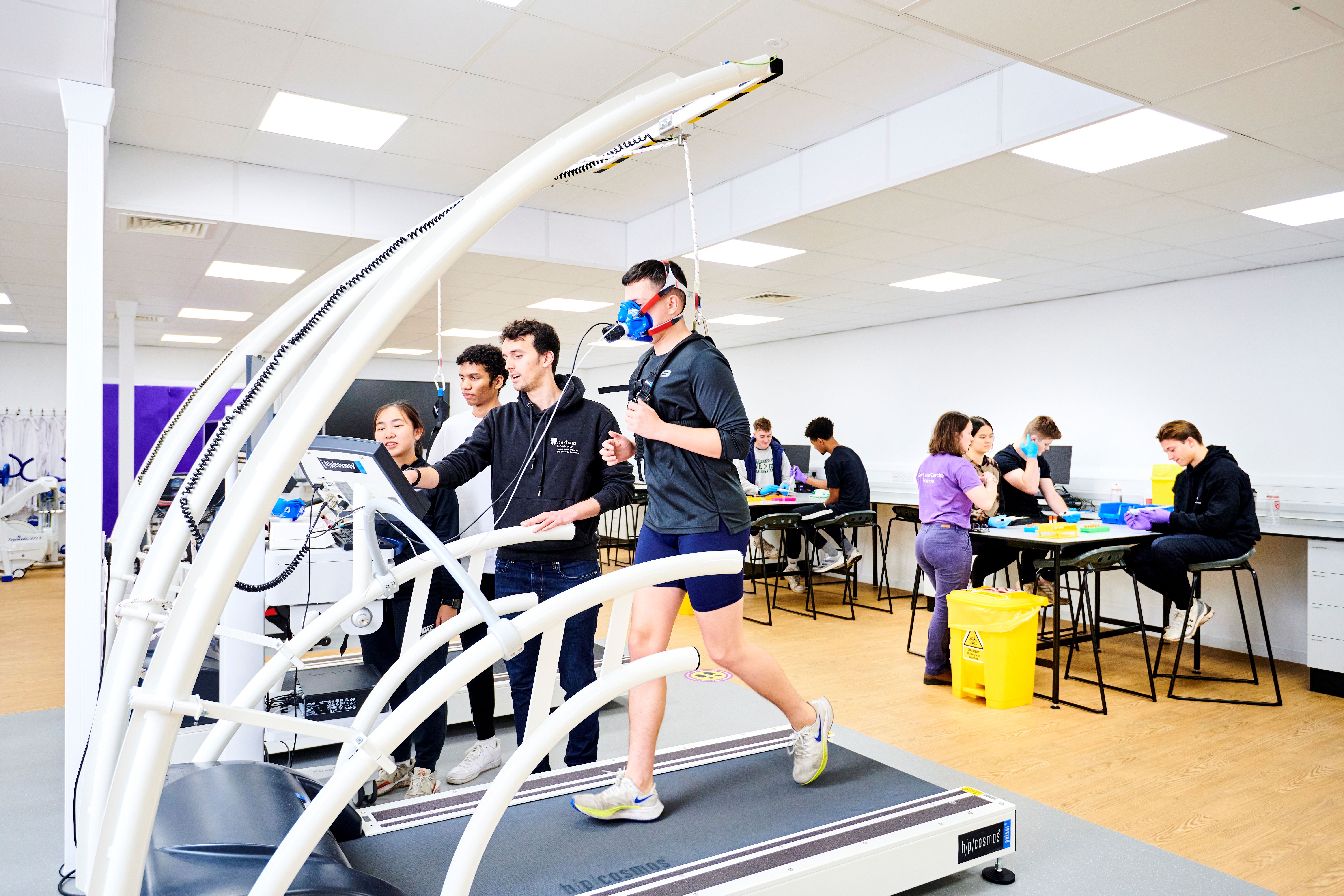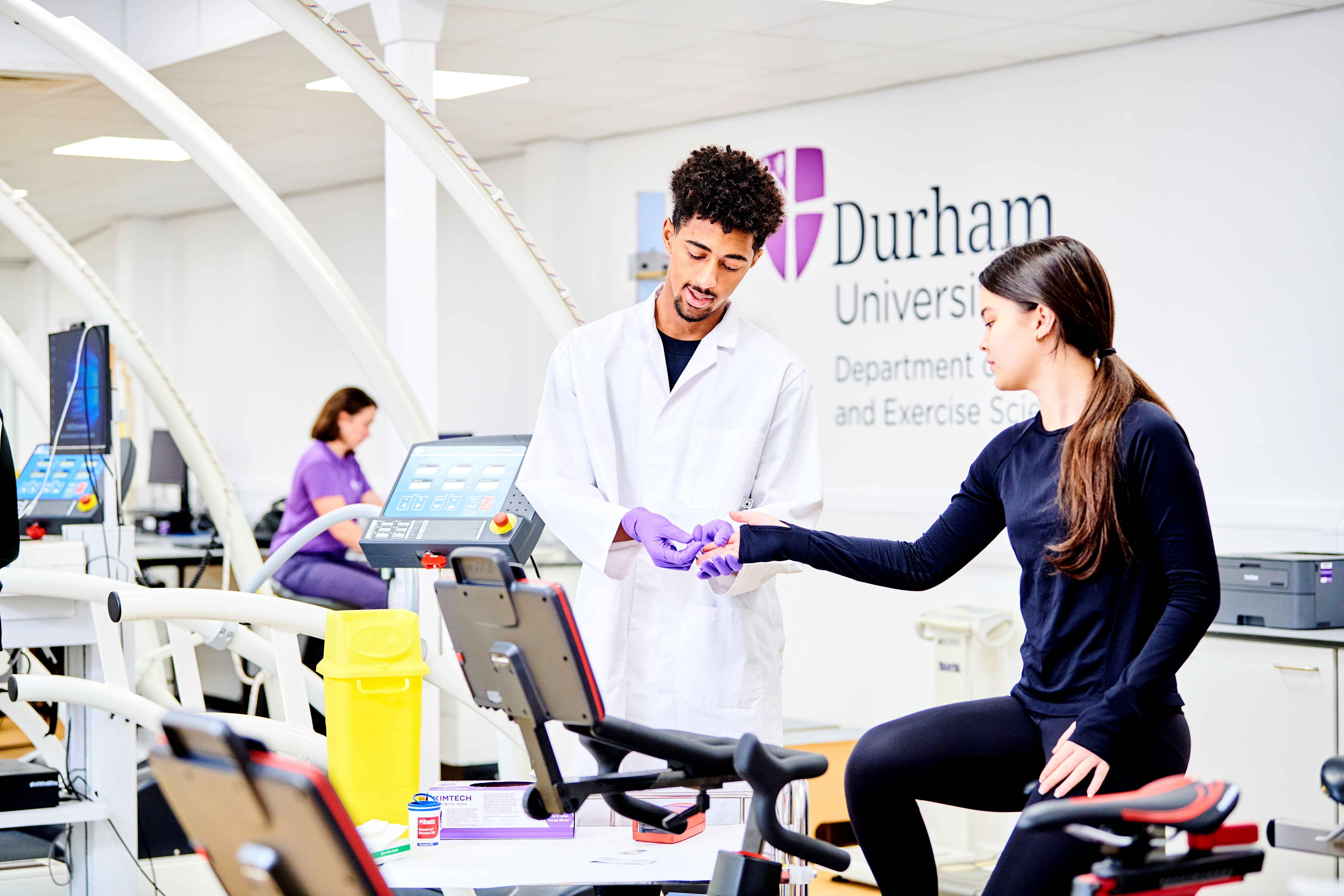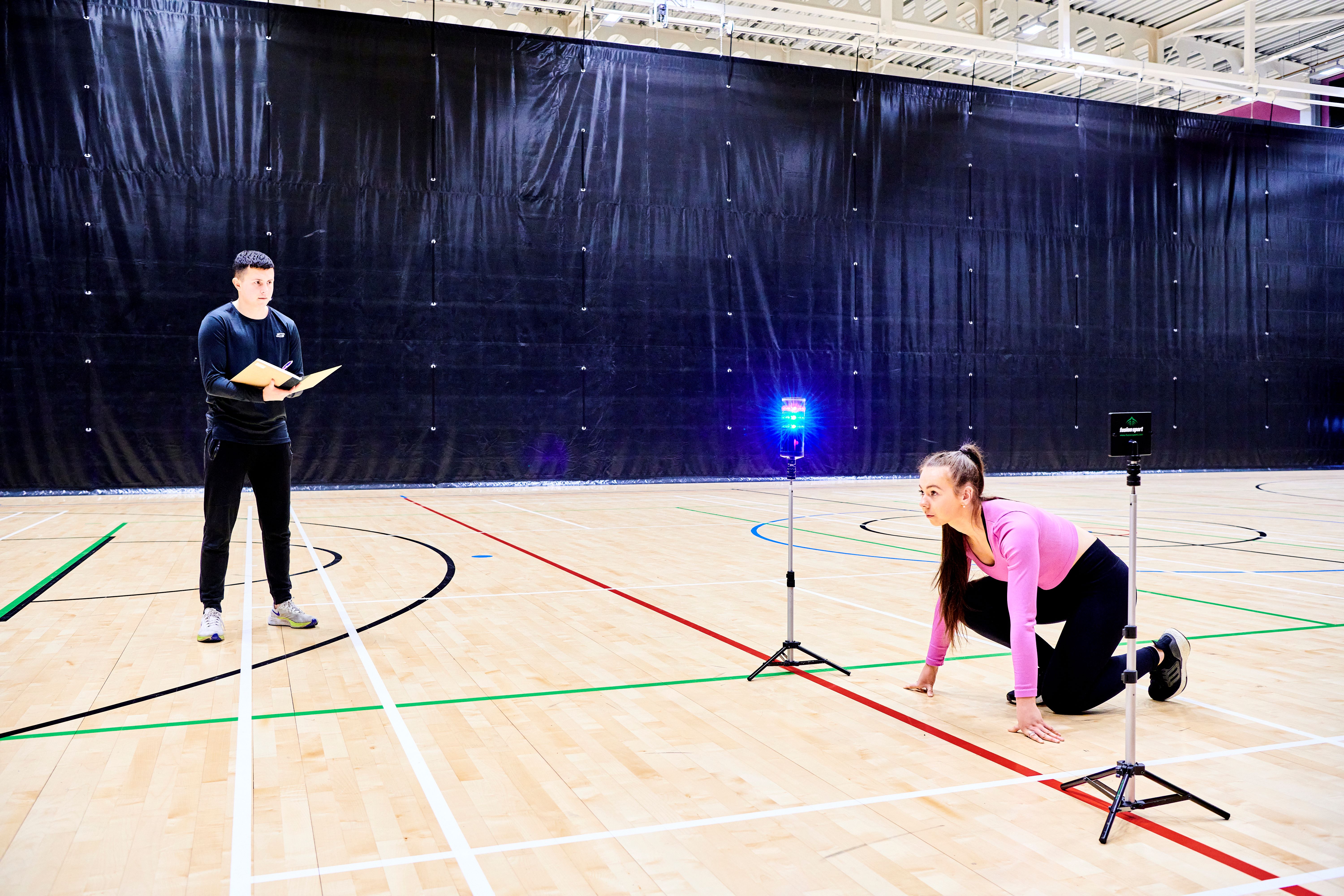Performance Profiling
VO2 Max
This test will determine your maximal aerobic capacity which is your maximum ability to use the oxygen you breathe in to provide energy for working muscles. This test will provide your VO2 max, maximum heart rate, and running speed at VO2 max. The test consists of a multistage protocol which increases the intensity every 1 to 3 minutes until you have reached exhaustion. During the test you will be wearing a facemask that continuously measures oxygen consumption throughout the test via a breath-by-breath gas analyser. You will also wear a heart rate monitor across your chest throughout the chest to measure maximum heart rate.
What to expect?
You should attend your appointment ready for exercise. For a treadmill test, this means appropriate footwear for treadmill running and athletic clothing. For a cycling test, this means athletic clothing (ideally cycling shorts) and if you have them, cycling shoes, if not athletic footwear will be fine. For a rowing test, this means athletic clothing and athletic footwear. You may bring your own water bottle and/or a sports drink for during and after the test. There will also be a water filling station and plastic cups available . To prepare for the test, please ensure you are hydrated the day of your test and do not eat a large meal within 3 hours of your test time (snacks are okay). It's recommended that you eat a high carbohydrate meal the day before and avoid alcoholic beverages. Additionally, you should not exercise the day prior or day of the test. You will be given a warm-up before the test begins.
Lactate Threshold
This test is used as a submaximal test to measure your physiological response to increasing exercsie intensity. This test will provide your lactate threshold, lactate turn point, and heart rate training zones which can inform your future training sessions. The test consists of 6-10 stages of increasing intensity which are set based on your running/cycling/rowing ability. As this is a submaximal test, your end stage will not be exhaustion. The test will end after you have reached your lactate turn point. Before you start and then at the end of each stage a finger prick blood sample will be taken to measure your blood lactate concentration. You will also be wearing a heart rate monitor around your chest throughout the test.
What to expect?
You should attend your appointment ready for exercise. For a treadmill test, this means appropriate footwear for treadmill running and athletic clothing. For a cycling test, this means athletic clothing (ideally cycling shorts) and if you have them, cycling shoes, if not athletic footwear will be fine. For a rowing test, this means athletic clothing and athletic footwear. You may bring your own water bottle and/or a sports drink for during and after the test. There will also be a water filling station and plastic cups available . To prepare for the test, please ensure you are hydrated the day of your test and do not eat a large meal within 3 hours of your test time (snacks are okay). It's recommended that you eat a high carbohydrate meal the day before and avoid alcoholic beverages. Additionally, you should not exercise the day prior or day of the test. You will be given a warm-up before the test begins. For the blood sampling, a small needle will be used to puncture the top of your finger and blood will be collected from the site onto a testing strip. If there is not enough blood from one site for every stage, we might have to pierce an additional site. You will experience a sharp scratch initially and a small amount of bruising could develop.

Health & Body Composition
Resting Metabolic Rate (RMR)
Your resting metabolic rate is how much energy you burn while resting before we take into account energy used for daily activity and exercise. This information can be useful when considering your energy intake. It is calculated by measuring the amount of oxygen you use and carbon dioxide you produce over a 30 minute period. To measure it we use a gas analyser and face mask which covers your mouth and nose. The test is completed in a comfortable reclined position. You will need to rest for a period of 15 minutes before the test starts so total time is 45-60 min. Resting metabolic rate should be measured in the morning, soon after waking before eating anything or exercising.
What to expect?
You should attend your morning appointment in a rested and fasted state. This means no exercise the previous day, no active travel on the day and before you have eaten. You will be asked to rest quietly for 15 min in reclining chair in a small room off our main lab. This rest period is to allow you to relax and your body to come into a resting state having travelled to the lab. After the rest period you will be fitted with a facemask which will go over your mouth and nose, it will in no way restrict your breathing and we ask you to breath as normally as possible. You will have some time to get used to the mask before we collect data to calculate your resting metabolic rate. You should be as relaxed as possible but remain awake. The gas analyser will measure the air your breathe in and out. Once the data have been collected we will remove the mask and calculate your results.
Metabolic Health Markers
These measurements give an indication of your metabolic and cardiovascular health. Blood samples will be collected via a finger prick and analysed during your assessment. Measurement of blood pressure and waist to hip ratio are quick and routine. Total measurement time should be less than 30 minutes.
What to expect?
To make sure we get the sample under good conditions your sample should be collected in the morning before you eat. You should ensure you are hydrated, drink a large glass of water 30 min before the sample is taken. A small needle will be used to puncture the top of your finger, blood will be collected from the site into the vials. If there is not enough blood from one site, we might have to pierce an additional site. You will experience a sharp scratch initially and a small amount of bruising could develop. We will analyse your sample immediately. Your blood pressure will be measured by placing a cuff around your upper arm and inflating it the required point for measurement. We will measure your waist and hip circumferences to calculate your waist to hip ratio. Please ensure your do not wear thick or very baggy clothing.
ISAK Assessment
This measurement profile consists of several measurements related to your body composition. The measurements include height, body mass, 8 measurements of skinfold thickness and 5 girth measurements. The measurements will be taken by an ISAK (International Society for the Advancement of Kinanthropometry) accredited practitioner and will take no longer than 30 minutes.
What to expect?
For ease of measurement, it is best to wear shorts and a loose-fitting vest. We will measure your height and body mass first and then complete the other measurements. The sites for skinfolds are located at the tricep, bicep, bottom of the shoulder, top of the hip at the side and front, next to the bellybutton, middle of the thigh and calf. Girth measurements are the arm, waist, hips and calf. To ensure accuracy of measurement the practitioner will mark up sites on your skin with an eyeliner pencil. The girth measurements are taken with a soft tape measure and skinfold thickness is measured by gently lifting a fold of skin at the marked site and using skinfold callipers to measure the thickness. The process is not sore, and measurements are taken quickly. Each site is measured twice for accuracy. The practitioner will talk you through your results and send them via email for your own records.

Strength Assessments
Isokinetic Dyanometer testing
The isokinetic dynamometer can be used for a range of tests. It can be used to measure your strength, endurance, power and range of motion of all major joints and muscles with the knee joint being the most common. These assessments can be used to aid rehabilitation from injury or to identify muscle imbalances (e.g., hamstring: quadricep ratio).
What to expect?
You should attend your appointment ready for exercise. This means any typical workout clothing and footwear will be suitable. You may bring your own water bottle and/or sports drink for during and after the test. There will also be a water filling station and plastic cups available. You should avoid any heavy sessions 24 hours before your test. You will be given a warm-up before the test begins.
Force Plate Analysis
This test is used to determine your power and jump profile. This test will provide your jump height and peak power. During the test, you will perform a certain number of jumps and repeats. These results can be used to guide future strength programmes and optimise performance.
What to expect?
You should attend your appointment ready for exercise. This means your typical workout clothing and footwear that is suitable for jumping. You may bring your own water bottle and/or sports drink for during and after the test. There will also be a water filling station and plastic cups available. You should avoid any heavy sessions 24 hours before your test. You will be given a warm-up before the test begins

Packages
Endurance package
Our Endurance package includes:
- a VO2 max test
- a lactate threshold test.
For further information on what each test entails and what to expect please see information in the sections above.
Full Metabolic Profile
Our Full Metabolic Profile package includes:
- A resting metabolic rate test
- A test for metabolic health markers
For further information regarding what a resting metabolic rate test entails please see information in the sections above.
Strength Athlete Package
Our Strength Athlete package includes:
- Force Plate Analysis
- Wingate Test
- Isokinetic Dynamometer Assessment
For further information regarding what a force plate analysis and isokinetic dynamometer entails please see information in the sections above.
The Wingate Test
This test will determine your peak power, anaerobic capacity, and fatigue resistance. The test involves a short but intense burst of all-out effort on a stationary bike. The test lasts 30 seconds with a weight of 7.5% of your weight as resistance on the bike.
What to expect?
You should attend your appointment ready for exercise. This means your typical workout clothing that is suitable for cycling. For foortwear, the bike that we will be using does NOT have the option for cycling shoes so athletic footwear will be fine. You may bring your own water bottle and/or a sports drink for after the test. There will also be a water filling station and plastic cups available. To prepare for the test, please ensure you are hydrated the day of your test and do not eat a large meal within 3 hours of your test time. Additionally, you should not excersie the day prior or the day of the test. You will be given a warm-up before the test begins and a cooldown afterwards.


/prod01/prodbucket01/media/durham-university/departments-/79645-1920X290.jpg)